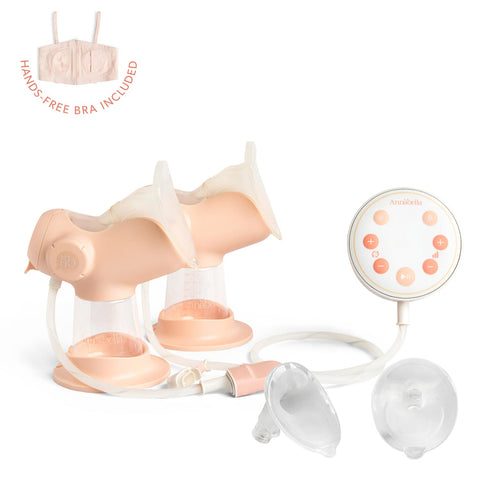Welcome to the ultimate guide for breastfeeding moms seeking to master their pumping schedules! Navigating the realm of breastfeeding and pumping can sometimes feel like embarking on a complex odyssey, with twists, turns, and unexpected challenges along the way. However, fear not, because with the right knowledge and guidance, you can craft a pumping schedule that perfectly suits your unique needs and circumstances. Join us as we delve into the intricacies of breastfeeding, pumping, and everything in between, empowering you to navigate this journey with confidence and ease.
Understanding Your Baby's Routine
The first step in mastering your pumping schedule is to understand your baby's natural rhythm. Babies typically begin to establish their own sleeping-eating-waking patterns around the age of four months. While it may be tempting to impose a rigid schedule early on, it's important to recognize that every baby is different, and trying to force a schedule before your little one is ready can be counterproductive.
For newborns and younger babies, we recommend incorporating pumping sessions after breastfeeding to stimulate milk production. This not only helps maintain a healthy milk supply but also ensures that your body adapts to your baby's growing needs. Remember, flexibility is key during this stage, so be prepared to adjust your schedule as your baby's routine evolves.
Crafting Your Pumping Schedule
Once your baby has settled into a more predictable routine, it's time to craft your pumping schedule. Start by documenting your baby's sleeping and feeding times as a foundation. Then, aim to schedule pumping sessions approximately 30-60 minutes after each breastfeeding session. This interval allows your body time to replenish milk reserves while avoiding any interference with direct breastfeeding.
When it comes to the duration of each pumping session, aim for around 15-20 minutes or until you experience 1-2 milk let-downs. It's important not to over-pump, as this can lead to oversupply and other complications. Stick to your usual pumping duration to maintain a healthy balance.
Possible Pumping Schedule Templates:
-
Morning-Afternoon-Evening Schedule:
-
Morning: Pump after the first feeding session, usually around 6-8 am.
-
Afternoon: Pump again around midday, approximately 3-4 hours after the morning session.
-
Evening: Pump for the final time in the early evening, around 7-9 pm.
-
Every 3 Hours Schedule:
-
Pump every 3 hours throughout the day, starting from the first feeding session in the morning.
-
Example: 6 am, 9 am, 12 pm, 3 pm, 6 pm, 9 pm, and so on.
-
Cluster Pumping Schedule:
-
Pump for shorter durations but with increased frequency during certain times of the day, such as morning and evening.
-
Example: 15-minute pumping sessions every 2 hours from 6 am to 12 pm, followed by longer breaks in the afternoon and evening.
Preparing for Work
For moms planning to return to work, establishing a pumping schedule well in advance is crucial. Starting about a month before your return date allows ample time to fine-tune your routine, prevent a potential decrease in milk production, and adjust to the demands of balancing work and breastfeeding.
Incorporating regular pumping sessions into your daily routine can help ensure a steady milk supply and alleviate any concerns about maintaining breastfeeding while fulfilling work obligations. Remember to communicate with your employer about your pumping needs and make use of any available accommodations to ensure a smooth transition back to work.
Seeking Support
If you're unsure about the right pumping schedule for your unique circumstances or need assistance in building your routine, don't hesitate to seek support. Consulting a lactation specialist or reaching out to our team can provide invaluable guidance and reassurance as you navigate the intricacies of breastfeeding and pumping.
Remember, you're not alone on this journey. There are countless resources available to support you every step of the way, from online forums and support groups to lactation consultants and breastfeeding classes. Don't hesitate to reach out for help if you need it.
Conclusion: Your Pumping Journey
In conclusion, crafting a pumping schedule tailored to your needs requires patience, flexibility, and a willingness to adapt. By understanding your baby's routine, incorporating regular pumping sessions, and seeking support when needed, you can establish a sustainable routine that supports your breastfeeding goals and enhances your overall well-being.
Remember, every mother's journey is unique, and there's no one-size-fits-all approach to pumping. Trust your instincts, listen to your body, and don't hesitate to reach out for assistance along the way. With perseverance and determination, you can master your pumping schedule and embark on a fulfilling breastfeeding journey with confidence and empowerment.
Expanding Your Pumping Knowledge
As you continue on your breastfeeding and pumping journey, consider expanding your knowledge with resources such as books, online forums, and support groups. Engaging with other breastfeeding moms and sharing experiences can provide valuable insights and encouragement as you navigate the challenges and triumphs of motherhood. Together, let's celebrate the incredible bond between mother and baby that breastfeeding fosters, and support one another in our breastfeeding journeys.







